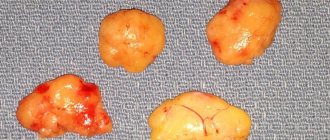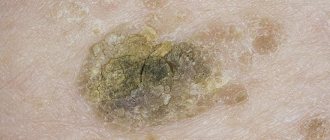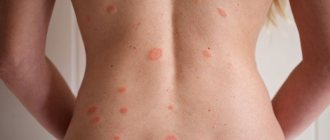Home » Traditional recipes » Venereal diseases
Sexually transmitted diseases
Author Maria Khorolets Reading time: 10 min. Views 747 Published 12/22/2015
Many women are affected by such an unpleasant problem as colpitis. Many specialists will advise you on pharmaceutical suppositories and expensive antibiotics to quickly solve this problem. And you can enhance the therapeutic effect with folk remedies, especially if this disease occurs during pregnancy and traditional treatment is not always justified.
- Treatment with folk remedies
Decoctions and infusions from plants and herbs for oral administration - Essential and vegetable oils for bacterial vaginitis
- Baths and douching
- Other folk methods
- Featured Product Gallery
Classification
Depending on the initial source of infection, the following types of disease are distinguished:
- Primary form. Infection occurs immediately in the vagina.
- Secondary form. Infection in the vagina comes from the uterus and vulva.
Diffuse colpitis is also distinguished, characterized by minor discharge.
The serous-purulent type occurs against the background of erosive damage to the mucous membrane with strong purulent discharge.
Causes of the disease
Provoking factors include:
- pathologies of internal organs, occurring in acute and chronic forms;
- sexually transmitted infections (mycoplasmosis, chlamydia, trichomoniasis and others);
- long courses of treatment with antibacterial agents;
- diseases of the endocrine system (diabetes mellitus, obesity and others);
- allergies to hygiene products and contraceptives;
- any injuries to the genitals, including those received during medical procedures;
- atrophic processes during menopause;
- anatomical changes of the vagina.
But the main provoking factor is the woman’s ordinary failure to comply with the rules of personal hygiene.
In girls, vaginitis may appear due to the presence of tonsillitis or scarlet fever. The infection enters the vagina through the bloodstream. Foreign bodies can also cause infection. In old age, against the background of deteriorating hormonal levels, the mucous membranes of the genital organs become dry, microtraumas appear and the inflammatory process begins.
Causes of colpitis in women
The development of the disease occurs due to the entry of various pathogenic microorganisms into the vagina (pinworms, gonococci, trichomonas, ureaplasma, Proteus, Gardnerella, E. coli, staphylococci, streptococci, chlamydia, Candida fungi. Various viruses can also cause colpitis, such as papillomavirus, cytomegalovirus or herpes virus.
Microorganisms can get onto the mucous membrane in various ways: with unwashed hands, with insufficiently thorough hygiene of the genital organs, with stale underwear. Also, the inflammatory process can be triggered by prolonged mechanical irritation of the mucous layers of the vagina. This often occurs among women whose doctor has prescribed them to wear rings, which protect the vaginal walls from falling out. Interestingly, colpitis can be diagnosed not only in adult women and girls. This pathology often occurs in childhood in girls aged 4-12 years. The cause is most often the flow of blood in the genitals during diseases such as measles, influenza and scarlet fever.
But you need to keep in mind that a woman is never in completely sterile conditions, so the entry of pathogenic bacteria into the body is normal and natural. A healthy female body is able to independently get rid of pathogenic microbes without any negative consequences. In view of this, several factors predisposing to infection with colpitis can be named:
— Decreased functional activity (hypofunction) of the ovaries.
— Diseases with a chronic course of various systems and organs.
— Abnormal structure of the organs of the reproductive system (this may include prolapse of the vaginal walls, displacement to the side of the genital organs, wide gaping of the genital slit, etc.).
Sluggish vaginosis of bacterial origin (can occur as a result of improper douching, the use of potent antiseptic drugs, illiterate use of intrauterine contraceptives, as well as due to the natural physiological thinning of the vaginal mucosa in the postmenopausal period).
At risk are women who have a history of various diseases of the genitourinary system and those who regularly use intrauterine devices. The risk of “catching” colpitis is also high in women who have several sexual partners.
Doctors know cases of senile colpitis. In older women, the vaginal mucosa, due to age-related hormonal changes, becomes dry and “shrinks,” which can trigger the onset of an inflammatory process.
Symptom complex
Before you begin to relieve symptoms and treat colpitis with folk remedies, you should learn about the characteristic manifestations of the disease so as not to confuse it with another disease.
The acute form of the disease is characterized by the following symptoms:
- Copious discharge with an unpleasant odor. Depending on the cause of the disease, there may be either bloody or mucous or purulent discharge.
- Due to the negative impact of pathogenic flora in the vaginal area, burning and itching are observed.
- Swelling and redness of the mucous membranes and even the external genitalia may appear.
- The pathology can occur against the background of nagging pain in the lower abdomen.
- There may even be pain during urination.
The chronic form of the disease occurs against a background of mild symptoms. Pain is usually not present, and there is no general deterioration in health. However, discharge is present, itching and burning are observed.
At the initial stage, the easiest way to treat colpitis is with folk remedies. The prolonged form of the disease threatens complications such as uterine erosion, endometritis and even infertility.
Alternative medicine
Treatment at home is carried out using douching, sitz baths, medicated tampons and taking medicinal decoctions orally.
It is recommended to combine non-traditional treatment methods with conservative therapy. Depending on the type of inflammatory process, the doctor can tell you which herbs should be used in treatment.
Diet
The restoration of beneficial microflora will be helped by the consumption of fermented milk products rich in beneficial bifidobacteria and lactobacilli (ryazhenka, kefir, whey, sour cream). They promote the synthesis and better absorption of vitamins A and E, thus reducing inflammatory processes and strengthening the immune system.
Undoubtedly, it is worth including foods containing polyunsaturated acids in your diet. These include trout, salmon, shrimp, tuna, fish oil, cod, and flaxseed oil. The following set of products will help fill the deficiency of useful microelements for colpitis:
- all types of nuts, legumes, liver, mushrooms, cheese, spinach - vitamin B;
- seaweed, broccoli, viburnum, dried apricots, sorrel, prunes, viburnum, wild garlic;
- currants, strawberries, wild strawberries, orange, lemon, sea buckthorn, kiwi - vitamin C;
- buckwheat, oatmeal, peas, beans, turkey, goose and lamb - zinc;
- seafood – magnesium;
- low-fat cream, barley, mustard seeds, feta cheese - calcium.
Featured Product Gallery
Prohibited foods that can lead to weakened immunity and complications of colpitis include:
- confectionery;
- chocolate bars and jam;
- carbonated drinks;
- White bread;
- beer and alcohol;
- fat meat;
- marinades and sauces;
- smoked meats.
Trichomonas vaginitis
This type of disease occurs due to the penetration of sexually transmitted bacteria into the vagina. Most often, such vaginitis occurs in women who are sexually active. Trichomonas colpitis is characterized by acute pain, severe burning and itching. The discharge has a very unpleasant odor.
Along with conservative methods, the most effective treatment for colpitis is folk remedies using onions. To prepare the mixture, you will need to squeeze one onion and mix the juice with glycerin. The components come in equal parts. A tampon is soaked in the resulting mixture and placed in the vagina for several hours. After removing the tampon, you should wash thoroughly, and before insertion it is best to do a cleansing douche. The course of treatment with onions should be 20 days.
For douching, a decoction of calendula flowers is best suited. They are simply poured with boiled hot water in a ratio of 1:3 and left for an hour. It is this plant that has pronounced antiseptic properties.
For internal consumption, the rhizomes of the swamp iris are used. The tincture is made with alcohol, which will require 10 parts, and rhizomes - 1 part. The components are mixed and infused for 5 days in a dark place. After this time, the tincture is consumed 5 times throughout the day, one tablespoon at a time.
But it is worth remembering that you cannot limit yourself to treating colpitis with folk remedies; you can completely get rid of Trichomonas vaginitis with the help of conservative therapy combined with folk recipes.
Types of colpitis
The disease has several types of course. The most common are:
- Trichomonas. It manifests itself as damage to the vaginal environment by Trichomonas bacteria. Symptoms of such vaginitis are the presence of a foul odor and foamy green discharge.
- Candida. Its appearance is associated with a disruption of the vaginal microflora, resulting in the growth of Candida fungi. The disease is identified by a curd-like discharge with a sour odor. May appear after antibiotic therapy.
- Atrophic colpitis is associated with dryness in the vaginal environment. This is caused by a decrease in estrogen content in the body during menopause. As a result, pathogenic flora begins to grow. A scanty grey-pale leucorrhoea is discharged from the vagina, which smells unpleasant.
- Senile. Occurs against the background of inflammation of the vaginal mucosa. It is identified by excessive lichen secretion and a strong foul odor. During sexual intercourse, pain and itching occurs, and trips to the toilet become more frequent.
- Chronic is manifested by pain syndromes in the pelvic region, heaviness in the vaginal area, itching, specific secretions, urination disorders and pain during sexual interaction.
- Age-related occurs in women during menopause. This condition is associated with changes in hormonal levels. During this period, the work of the egg glands slows down, which helps reduce the acidity of the mucous membrane and develop an alkaline environment. Against this background, an unhealthy flora and inflammatory environment develops, which requires immediate treatment.
Candidal vaginitis
This type of disease is also called yeast disease. The pathology does not pose a particular threat to the health of patients, but significantly reduces the quality of life.
According to reviews, treating colpitis with folk remedies is quite possible; there are several real effective recipes.
You can give yourself vaginal baths. To prepare the solution you will need the following components:
- juniper berries;
- chamomile flowers;
- sage leaves;
- yarrow;
- calendula;
- poplar and birch buds;
- eucalyptus.
All medicinal herbs are mixed in equal parts. For a liter of boiling water you will need to add two tablespoons of herbal tea and let it sit overnight, preferably in a thermos. The next day, you can do vaginal baths by preheating the tincture.
This collection is suitable for internal use. For treatment, take 150 grams of the mixture orally before each meal.
Ordinary tea can be replaced with a decoction of white clover.
Another recipe, the most effective for treating colpitis with folk remedies, is baths with iodine and soda. To prepare the composition for the bath, you will need to dilute iodine (a teaspoon) and baking soda (a tablespoon) in one liter of water. The procedure lasts 20 minutes, the water should be at a comfortable temperature. According to reviews, the results of the treatment are already noticeable after three days of daily procedures.
Candidal vaginitis can be treated with low-fat kefir, in which a gauze swab is soaked and placed over the vagina overnight. In the morning, it is mandatory to douche with a chamomile solution. The duration of the course of treatment is 5 days.
You can quickly relieve the symptoms of the disease by douching with tea tree oil and olive oil. The components must be mixed in equal parts. The procedure can be carried out using a syringe without a needle.
Nonspecific vaginitis
Treatment of colpitis in women with folk remedies of this type gives a quick effect. To relieve the inflammatory process, you can prepare a herbal mixture for oral use. To collect you will need the following herbs:
- calendula flowers;
- raspberry leaves;
- blackberry leaves;
- chamomile flowers;
- acacia;
- nettle;
- Oak bark;
- yarrow;
- mistletoe leaves.
All herbs are added to the collection in equal parts. To prepare the decoction, you will need to dilute two tablespoons of the mixture in one liter of water, which has already begun to boil. Keep the broth in a steam bath for about half an hour. You should drink 0.5 cups of the decoction before each meal.
Traditional methods of treating colpitis involve the use of a tampon. For them, you should prepare a solution of rosemary, oak bark, sage and yarrow. All raw materials are mixed in equal parts. For one procedure, you should brew the herbs (a tablespoon) in a glass of boiling water and bring to a boil. After they have infused, a tampon is moistened in the broth and inserted deep into the vagina. A quick effect can be achieved if tampons are used twice a day: in the evening and in the morning.
To improve the effect of treatment and increase immunity, it is recommended to eat an egg yolk and drink whey (a glass) daily.
Treatment
What and how to treat for atrophic colpitis can only be determined by a gynecologist. The main and effective method of treating atrophic colpitis in women of both postmenopausal and reproductive age is the prescription of hormone replacement therapy or HRT. It is the intake of hormones that helps to mislead the vaginal mucosa, forcing the epithelium to renew itself cyclically (the influence of estrogens), which improves the nutrition of the mucosa, reduces the degree of its atrophy and prevents the formation of microtraumas.
HRT can be carried out in two ways: administering hormones systemically, in the form of tablets, injections or hormonal patches, or locally (suppositories, ointments, creams). Hormonal therapy should be carried out for a long time, at least 1.5 - 3 years, although a positive effect is observed after 3 - 6 months from the start of treatment. But if the course of HRT is stopped, the symptoms of senile vaginitis return again, often complicated by the addition of a secondary infection.
Atrophic form
This form of the disease is also a nonspecific form and appears after menopause. The disease is associated exclusively with a decrease in the amount of estrogen.
Treatment of atrophic, age-related colpitis with folk remedies is carried out with the help of rose petals. Not only rose petals are added to the herbal mixture, but also nettle, lungwort roots, chamomile and St. John's wort. All components are placed in 500 milliliters of boiling water and placed in a water bath for 30 minutes. It is necessary to douche with this decoction every day, after carrying out the hygiene procedure.
Excellent results in the treatment of atrophic colpitis with folk remedies can be achieved using peony tincture. For the tincture you will need 500 milliliters of vodka or medical alcohol, to which dry peony bud leaves (5 tablespoons) are added. The tincture is placed in a dark place for a whole month. After this, 5 tablespoons of the tincture are diluted in one liter of boiled warm water and douched.
The most effective treatment for atrophic colpitis with folk remedies is tampons with aloe juice. To prepare the product, you will need fresh leaves of the plant, from which the juice is squeezed. A cotton or gauze swab is generously moistened in this juice, which is then inserted deeply into the vagina. The tampon is placed overnight.
Treatment of atrophic colpitis with folk remedies can be carried out using a decoction of juniper berries and clary sage. One spoon of this mixture is poured with 200 milliliters of boiling water and boiled in a water bath for 10 minutes. The decoction should be taken at least 3 times a day. This mixture is suitable for use in a steam room.
Vaginitis during pregnancy
The disease affects 70 to 80% of women during pregnancy. Pathology can appear at any stage, but the most dangerous period is the last stage of gestation. In this case, there is a huge risk that the disease will provoke early labor, and ruptures may appear during the birth of the child. For a baby, the disease is dangerous due to chronic hypoxia. In each individual case, the doctor prescribes individual treatment depending on the form of the pathology, the duration of pregnancy, and the characteristics of the woman’s body. If antibacterial agents are used, it is only as a local treatment.
Herbalists recommend using natural antibiotics of plant origin.
Treatment of colpitis during pregnancy with folk remedies can be carried out using chamomile decoction. One tablespoon of flowers is diluted with a glass of boiling water and boiled for 10 minutes. Then the broth is diluted with warm water and local baths are made.
It is allowed to use rose hips, from which a decoction is made. Drink a quarter glass three times throughout the day. Rosehip helps strengthen the immune system.
It is allowed to treat the vagina with sea buckthorn oil. However, all methods must be agreed upon with the doctor who is seeing the pregnant woman.
Chronic form of vaginitis
If the disease has been bothering you for a long time, then it will be necessary to combine conservative and alternative medicine. However, a woman should understand that she will have to be patient.
You can carry out the douching procedure daily using a decoction of eucalyptus leaves. For a glass of water you will need 15 grams of herb, which is boiled for about 7 minutes. After infusion, one spoonful of the decoction is diluted in a liter of water and douched. This method is suitable for treating senile colpitis with folk remedies.
You can make tampons with honey, which is diluted with water in a 1:2 ratio. The prepared tampon is generously moistened in the resulting mixture and inserted into the vagina for the whole day. The course of treatment is 14 days.
A yellow egg capsule is suitable for treatment. The herb (one tablespoon) is poured with a glass of boiled water and kept in a water bath for about 15 minutes. For douching, the decoction is diluted with water in a ratio of one part decoction to five parts water.
Treatment of colpitis with folk remedies can be carried out using St. John's wort and calendula. Herbs are taken in a ratio of 1:2 and mixed with boiled water (2 cups). Boil the broth for 15 minutes. Before douching, the broth is diluted with water in a ratio of 1:5.
There is another interesting recipe for treating colpitis with folk remedies - a slightly acidic solution for douching. However, before using it, you should definitely consult a gynecologist.
To prepare the solution, you will need table vinegar or lemon juice, which is squeezed out of fresh fruit. One or another ingredient in the volume of one tablespoon is diluted in a liter of water.
For douching, you can use sandy immortelle. 20 grams of herb are poured into half a liter of boiling water, infused for about one hour, cooled and filtered.
Naturally, this is not a complete list of alternative medicine recipes, but during treatment a woman should take care of hygiene and adherence to the rules of a healthy lifestyle.
How to cure candidal colpitis with folk remedies
Category: Recipes from the people
Colpitis is a gynecological disease and occurs in women at any age. Often the pathology develops in individuals with a weakened immune status. Although vaginitis is considered a common problem, medicine has not yet been able to develop effective treatment regimens for this disease, since there are many reasons for its occurrence. In addition to medications, treatment of colpitis can be carried out using folk remedies.
Colpitis is considered to be inflammation that covers the vaginal area. This disease is also called vaginitis. Defining signs: the presence of significant discharge, the presence of itching and pain in the lower pelvic region.
The disease can affect not only the vaginal area, but also the external part of the genital organs. There is a disturbance in general health, such as:
- decreased activity;
- sexual dysfunction;
- feeling of weakness in the body.
Colpitis has acute and chronic forms of manifestation. Acute vaginitis is characterized by abundant mucous contents, which differs from normal in the following ways:
- unusual consistency;
- the presence of a sharp, unpleasant odor;
- the appearance of itching inside and outside the vagina;
- manifestation of pain syndromes during sex.
The chronic stage is manifested by the following symptoms:
- the disease worsens several times during the year and has a pronounced course;
- There is a change in the vaginal mucosa.
- the presence of acute and chronic diseases in the body, reducing its protective functions;
- the presence of sexually transmitted infections such as chlamydia, trichomonas, mycoplasma and ureaplasma;
- decreased endocrine function;
- uncontrolled use of medications, including antibiotics;
- allergic manifestations to various irritants;
- the presence of chemical and mechanical injuries to the genital mucosa caused by douching, abortion and the introduction of contraceptives;
- eating disorder;
- improper hygiene.
Colpitis can be different. It depends on the type of infection and the severity of the disease. Typical symptoms are:
- the presence of copiously secreted secretions with a pungent odor and varying consistency;
- pronounced itching and burning sensation in the genitals;
- the presence of swelling and redness of the vaginal mucosa;
- pain syndromes in the lower abdomen;
- painful urination.
The chronic course of colpitis is expressed by a more intense nature of secretion and itching. Its symptoms often occur even after undergoing drug treatment.
Statistics show that this pathology is inherent in almost every pregnant woman. Some of them learn about it only during this period of life. This is due to hormonal changes in the body.
The inflammatory process against the background of yeast colpitis can lead to complications that will contribute to infection of the fetus. The disease is usually asymptomatic or with acute recurrent manifestations. It is very important to remember that there are the following risks with yeast colpitis during pregnancy:
- The pathology does not lead to early labor, but increases the risk of infection of the child during his movement along the birth canal.
- Candida fungi can lead to the development of inflammation in the vagina during the postpartum period.
Before prescribing treatment for a pregnant woman, the gynecologist makes an accurate diagnosis, which includes:
- conducting a microscopic examination by taking a smear (microscopy) on the flora to determine infection;
- taking bacteriological cultures;
- determination of antibodies to Candida fungi;
- performing colposcopy.
After accurately determining the course of the pathological process, the doctor can prescribe local therapy to the patient, since taking antibiotics is prohibited for pregnant women.
Women at the onset of menopause (menopause) become susceptible to atrophic colpitis. The disease manifests itself due to a significant decrease in estrogen content in the body. In medical reference books, the pathology may be referred to as atrophic, senile, age-related or senile vaginitis.
The causes of senile colpitis are:
- low estrogen content;
- slow growth of the epithelial layer;
- decreased functioning of the vaginal mucosa;
- disruption of the endocrine glands;
- disruption of the vaginal microflora, which leads to bacterial vaginosis;
- increased vaginal dryness;
- growth of pathogenic microorganisms.
The risk group includes patients with severe diabetes mellitus, hyperthyroidism, endocrine abnormalities, HIV infection and decreased immune function.
Senile colpitis can progress due to frequent use of intimate gels, wearing unnatural underwear, excessive sexual interactions and insufficient hygiene.
In addition to drug therapy, traditional medicine is successfully used to eliminate the disease. With its help, you can not only relieve inflammation of the vaginal mucosa, but also stabilize its beneficial microflora and support the immune system. All methods are safe and have no contraindications for use. Some even enhance the effects of medications.
The method is effective and safe. Washing with chamomile infusion helps a lot. To obtain it, you need to pour boiling water (0.5 liters) of chamomile herb (1 tablespoon). Warm up in a water bath for 15 minutes, cool and use warm for rinsing. The procedure is carried out in the evening before bedtime. The period of application is 14 days. To take baths, the contents are diluted warm in a basin.
Calendula inflorescences have an excellent anti-inflammatory effect. This remedy is especially good at eliminating the trichomonas form of colpitis. To obtain a douche solution, a pharmacy tincture of calendula in alcohol is used. It is diluted in warm liquid in the following ratio: 1 teaspoon of solution is taken for 1 glass of water. A decoction of calendula flowers is also used. It is prepared similarly to chamomile infusion.
An infusion of oak bark is considered an effective composition for colpitis. The component (2 tbsp) is poured into boiling liquid and left for 30 minutes. in a water bath. For rinsing, the infusion is diluted in water 1:4 and the procedure is carried out for 14 days.
For candidal vaginitis, a solution of 1 tbsp is successfully used to wash the genital mucosa. spoons of soda and 3 drops of iodine. All this is diluted in 1 liter. boiled warm liquid.
It is also preferable to use tampons and baths, including a base of essential oils: fir, eucalyptus, tea tree. To take a bath, you need to dilute 10 drops of ether in a bucket of warm liquid. The procedure is carried out shortly before bedtime for half an hour until all symptoms pass.
To insert a tampon, you will need equal amounts of sunflower oil and ether oil. Everything is mixed, the tampon is dipped into the contents and inserted into the vagina overnight. The course of the procedure is 10 days.
Traditional medicine recommends treating colpitis with sea buckthorn or oil chlorophyll solution undiluted. It is recommended to moisten a tampon in the solution and insert it into the vaginal area overnight.
In addition to using local therapy, internal therapy is also used in the form of herbal decoctions and teas. An infusion of valerian roots, nettle leaves and lemon balm helps relieve inflammation of the mucous membranes. Everything is chopped equally. For 0.5 liters of boiling water, place 2 tbsp. spoons of herbs and infuse in a warm place for several hours. You need to drink the infusion twice a day before meals, 30 minutes.
To relieve itching, a decoction of rose hips is used. It is good for both douching and tea. It is prepared in concentrated form. A liter of boiling water is poured into 4 cups of chopped rose hips. Drink as tea throughout the day. Douching is carried out at night.
To cleanse the microflora, it is recommended to drink an infusion of triphala at night. 0.5 teaspoon of herb is poured into a glass of water and boiled for 5 minutes. The decoction is filtered and drunk before bed.
To restore a healthy vaginal environment, you need to introduce more products containing lactobacilli into your diet, such as kefir, whey, fermented baked milk, yogurt. Due to the content of beneficial bacteria, eating such food helps to absorb vitamins A, E and B, reduces inflammation in organs and improves immune function.
It will be beneficial to consume foods containing polyunsaturated fatty acids. This substance is found in fish fat, trout, salmon, shrimp, tuna, and flaxseed oil. The disease is caused by a deficiency of the following vitamin components in a woman’s body:
- A and E, contained in seaweed, viburnum, dried apricots, prunes, sorrel and spinach;
- C, which is found in orange, kiwi, currant, sea buckthorn;
- B, you can replenish the deficiency by eating legumes, liver, mushrooms, spinach, cheese and garlic.
In addition to vitamins, zinc, magnesium and calcium are added to the diet. These microelements are found in buckwheat, oatmeal, nuts, lamb, seafood, feta cheese, and porridge. Eating fresh vegetables and fruits will be beneficial.
During the treatment period, it is better to avoid spicy, sweet and salty foods, alcoholic beverages and flour, as their consumption contributes to irritation of the mucous membrane and the growth of pathogenic bacteria.
To avoid this disease, every woman should adhere to preventive measures, which include:
- maintaining intimate hygiene;
- use of contraceptives during sexual intercourse;
- conducting sexual relations only with a regular partner;
- taking hormonal and antibiotics only as prescribed by a doctor;
- exclusion of injuries to the vaginal mucosa.
By following preventive instructions, you can not only avoid the manifestation of colpitis, but also increase the body’s resistance to the effects of pathogenic factors influencing the woman’s body.
Treatment of colpitis with folk remedies helps to quickly get rid of the disease and return to full functioning.
source
Colpitis is one of the most common gynecological diseases. The disease in the acute stage of development brings great discomfort, pain, and significantly reduces the level of quality of life. Many women ask the question “How to treat colpitis with folk remedies.” This topic is especially relevant during pregnancy, when many medications are contraindicated for use.
Before starting treatment, you need to understand what it is, how the disease occurs, and what provokes it.
Colpitis (vaginitis) affects the female sex at absolutely any age - from birth to old age. However, it is most common among adult women of reproductive age. The pathology is characterized by an inflammatory process of the vaginal mucosa. Often occurs together with vulvitis (inflammation of the external genitalia).
There are two types: specific and nonspecific.
Nonspecific colpitis develops against the background of the growth of colonies of opportunistic microorganisms. The vaginal microflora of a healthy woman is 98% populated by lactobacilli (Doderlein bacilli). They create a protective film on the vaginal mucosa, which prevents various infections from entering. In addition, glycogen, which is formed from dead epithelial cells, is processed by beneficial bacteria into lactic acid. This maintains a stable pH acidity level (not higher than 4.5), at which pathogenic microorganisms are not able to develop.
The remaining 2% of the microflora is populated by various opportunistic bacteria, the number of which within these limits does not pose a health hazard, but as soon as favorable conditions are created, rapid growth of colonies occurs, acidity increases, and local immunity decreases.
With the normal functioning of the body's defense system, this imbalance is eliminated on its own, otherwise an inflammatory process develops and a disease occurs.
Depending on the pathogen, there are three types:
- bacterial (streptococcus, staphylococcus, enterococcus, proteus and others);
- viral (herpes virus, papillomavirus);
- candidiasis (yeast-like fungi of the genus Candida, popularly called thrush).
There are two types of nonspecific vaginitis - primary (diagnosed in girls and older women due to age characteristics) and secondary (during reproductive age, when pathological processes occurring in the genitourinary area spread to the vagina).
Specific colpitis develops as a result of the introduction of sexually transmitted infections (STIs) into the body. The causative agents are chlamydia, trichomonas, myco-, ureaplasma, treponema pallidum, gonococcus and various combinations thereof.
There are a huge number of factors influencing the development of the inflammatory process. Among them, the age of the patient plays an important role.
In girls under 10 years of age, colpitis develops against the background of incompletely formed vaginal microflora, thin and easily vulnerable mucosa, which allows various infections to pass through.
Reproductive age involves pregnancies, during which immunity decreases, hormonal levels change dramatically, and an unstable emotional state is recorded. In addition, this period differs from others in its special sexual activity. Unprotected sexual intercourse can lead to an STI, which can lead to specific vaginitis.
Elderly women suffer from atrophic colpitis, which is an integral process during age-related changes in the body. The amount of natural leucorrhoea decreases, which leads to dry mucous membranes. Ovarian function decreases, hormonal levels change.
Also the reasons for the development of pathology are:
- diseases of the endocrine system;
- injury to the vaginal mucosa;
- long-term use of certain groups of drugs;
- abnormalities in the structure of the genital organs;
- decreased immunity;
- poor nutrition;
- avitaminosis;
- allergic reactions to components of detergents, fabrics, products.
Improper personal hygiene provokes the growth of opportunistic bacteria at any age. It is necessary to wash your face once a day (during menstruation, 2-3 are possible), and do not overuse detergents. More frequent procedures will lead to the washing out of beneficial flora. Proper washing is done from top to bottom (in the direction from the vagina to the anus).
The clinical picture depends on the duration of the pathology and what pathogen caused it. Any colpitis is accompanied by atypical vaginal discharge (possibly mixed with pus or blood), discomfort in the perineal area, pain after sexual intercourse, and sometimes cramps and pain when urinating. Body temperature may rise, general weakness and malaise, and pain in the lower abdomen may appear.
The clinic is clearly expressed only during the acute period. If this moment is missed and the disease is not completely treated, then vaginitis becomes chronic, which poses a serious health hazard.
Therapy for colpitis in women is carried out in an outpatient setting, only in the case of pathologies complicated by STIs; in case of atypical symptoms, inpatient conditions are indicated.
The diagnosis is made by a doctor based on a gynecological examination and the results of examinations completed. Treatment of the disease involves an integrated approach. It is important to carry out the whole range of measures - diet, personal hygiene, and the use of local antiseptics. For specific vaginitis, antibacterial drugs are prescribed.
Treatment of colpitis with folk remedies helps to get rid of symptoms and speed up the recovery process, but is not able to eliminate the pathogen.
Important! Self-medication with folk remedies is strictly contraindicated due to the fact that the removal of clinical manifestations does not indicate a solution to the problem. The provocateur of the disease remains in the body. This treatment creates favorable conditions for the pathology to become chronic.
The attending physician can recommend traditional medicine recipes that can only be used in conjunction with drug therapy. Will help you choose an effective remedy on an individual basis.
The most commonly used herbal decoctions are for oral administration, sitz baths and washes. Douching during colpitis is highly not recommended, since residual beneficial flora is washed out, local immunity is further reduced, which can provoke the addition of pathogenic microflora.
Herbalists suggest using plants (sometimes poisonous) that have anti-inflammatory, antibacterial, antiseptic, strengthening, restorative properties.
Top most effective traditional medicine recipes for the treatment of colpitis:
- Pine baths. For 10 liters of water you need to take 100 g of pine branches (sticks, needles, cones). Place over medium heat, after boiling, reduce the flame to low, and simmer for up to half an hour. Leave for several hours, filter. Take a sitz bath for 20 minutes before going to bed.
- Healing tea. Brew 5 g of sweet clover and centaury as regular tea (per 300 ml). Drink 100 ml morning and evening.
- Universal herbal tincture. Pour 250 ml of boiling water over calendula marigolds (40 g), leave until completely cool. Drink 30 ml three times a day after meals. You can enhance the effect by topical application - wash with tincture once a night.
- Chamomile. The safest folk recipe. Pour 50 g of chamomile flowers into a liter of boiling water and boil in a water bath for 20 minutes. Take a bath for 20 minutes several times a day.
- Collection of herbs. Pour boiling water (800 ml) over the collection (5 g of medicinal plants each - chamomile, yarrow, eucalyptus, juniper, sage, calendula, birch and poplar buds). Leave in a thermos for at least 8 hours. Take sitz baths for 15 minutes 2 times a day. You can also drink 100 ml three times a day 30 minutes before meals.
- Honey tampons. Soak a cotton-gauze swab generously in linden or thyme honey and insert it into the vagina overnight.
- Oak bark. Pour 20 g of bark with boiling water (250 ml), put on low heat, boil for 15 minutes, pour into a thermos and leave overnight. Wash yourself with the resulting infusion before going to bed.
- Dog-rose fruit. Pour boiling water (500 ml) over 80 g of dried rose hips and leave overnight in a thermos. Wash off with the medicine every day at night. You can drink 200 ml throughout the day.
- Bird cherry. Pour boiling water (300 ml) over 20 g of dried bird cherry fruits, cook over low heat for half an hour, let steep until cool. Strain and drink 100 ml before meals twice a day.
- Yellow capsule (poisonous). Pour boiling water over 20 g of the plant, cook in a water bath for 20 minutes. Cool, drink 20 ml during meals.
Celandine is also a poisonous plant, successfully used in the treatment of colpitis. To prepare the decoction, you need to pour 5 g of celandine into a glass of boiling water, leave for 15 minutes, strain and wash off overnight. You can soak a gauze swab with the same infusion and insert it into the vagina for 3 hours. And also, with great caution, take 15 ml orally in the morning and evening.
In addition, there are a huge number of folk recipes for the treatment of certain types of vaginitis. So, tea made from red clover flowers is useful for thrush. You need to pour half a liter of boiling water over 10 g of inflorescences, cover with a lid, and let it brew for 10 minutes. Strain, add honey and lemon if desired. Drink like regular tea.
source
You can treat colpitis at home using folk recipes as follows:
- carry out regular douching with decoctions and infusions of medicinal herbs;
- take sitz baths , adding medicinal infusions to them;
- insert medicinal tampons made independently into the vagina;
- take medicinal infusions orally.
Since colpitis can be different, treatment should be carried out individually , depending on the type of inflammation, and also as an adjuvant along with medications prescribed by a doctor.
plants in nature that have healing anti-inflammatory and antibacterial properties. So, for vaginitis, products based on:
- chamomile;
- calendula;
- coltsfoot;
- boron uterus;
- plantain;
- celandine;
- thyme;
- St. John's wort and many other herbs.
Trichomonas vaginitis is caused by the sexually transmitted bacterium Trichomona. This type of colpitis can be considered one of the most common gynecological pathologies, which are most often diagnosed in women who are sexually active .
The disease is often accompanied by unpleasant symptoms , such as: profuse leucorrhoea with a foul odor, very severe itching and burning sensation, pain and aching sensations in the lower abdomen.
The following folk remedies will help alleviate a woman’s condition
- Treatment with natural bee honey . For a week, you need to take 150 grams of natural honey daily, and at the same time insert a tampon generously lubricated with slightly warmed honey into the vagina;
- Therapeutic tampons with onion juice . Fresh onion juice must be mixed with glycerin in equal parts and soak a cotton swab or swab with it. Having previously cleaned the vagina using douching, the tampon should be inserted as deeply as possible and left for several hours, and after removing it, wash it with warm running water. The course of treatment should last about 20 days;
- Douching with calendula decoction. Calendula has powerful antiseptic properties, so its decoction can be very effective for Trichomonas colpitis. To prepare a decoction for douching, calendula flowers must be poured with boiling water in a ratio of 1:3 and left to infuse;
- Infusion for oral administration from marsh iris . One tablespoon of marsh iris rhizomes is poured with vodka in the exact ratio of 1 to 10 and infused. The drug should be taken five times a day, one tablespoon at a time.
Since Trichomonas colpitis often causes severe complications, its treatment should be carried out in a timely manner . An experienced doctor will help you choose the optimal combination of methods of official and traditional medicine.
Another common gynecological disease is candidal (yeast) colpitis , which does not pose a serious threat to a woman’s health, but significantly worsens the quality of life. There are many effective folk remedies that can help get rid of the unpleasant symptoms of this type of vaginitis. So, with your doctor’s permission, you can use the following recipes:
- Vaginal baths with an infusion of yarrow , chamomile, sage leaves, calendula, juniper berries, eucalyptus, birch and poplar buds, taken in equal proportions. Pour two spoons of the mixture into a liter of boiling water and leave in a closed thermos overnight. The same infusion can be drunk 150 g each time half an hour before meals;
- White clover flower tea;
- Sitz baths with soda and iodine. Dissolve one tablespoon of soda and a teaspoon of iodine in a liter of water, pour this solution into a basin and sit in it for twenty minutes. Three to four daily treatments are usually sufficient;
- Therapeutic tampon with low-fat kefir. A gauze swab should be soaked in kefir and left in the vagina overnight. In the morning, the tampon should be removed and douched with chamomile decoction. The course of treatment should last five days;
- With princeling with tea tree oil. Three drops of oil are mixed with a teaspoon of calendula oil and an equal amount of olive oil. For the procedure, you can use a syringe without a needle.
Usually, treating nonspecific vaginitis at home gives a fairly quick effect .
So, to eliminate symptoms and the inflammatory process, you can use the following recipes:
- Prepare a collection of plants : mistletoe leaves, chamomile, acacia, calendula, blackberry, yarrow, nettle, raspberry, oregano and oak bark. In order to make a medicinal decoction, pour about two tablespoons of this mixture into a liter of boiling water and leave in a water bath for half an hour. Drink half a glass of the strained drug daily before meals;
- A decoction of oak bark, yarrow, sage and rosemary can be used in tampons. To do this, pour a spoonful of raw materials into 250 ml of water and boil. After the broth has infused well, you need to soak a tampon with it and insert it deep into the vagina. It is recommended to repeat this procedure twice a day for two weeks;
- It is believed that you can increase the effectiveness of drug therapy if you drink one glass of whey and eat an egg yolk .
Atrophic vaginitis is also nonspecific, but it occurs in women after menopause , when the estrogen content in the body decreases.
To prevent the development of inflammation or reduce it, you can use the following traditional medicine:
- A decoction of clary sage and juniper berries . One tablespoon should be poured into a glass of boiling water and boiled for ten minutes. It is best to do this in a water bath. The resulting decoction should be taken orally 2-3 times a day. If you dilute it with a liter of water, you can pour it on the stones in the steam room;
- Douching with a decoction of rose petals. It is necessary to mix a spoonful of rose petals, chamomile flowers, lungwort root, nettle and St. John's wort. Next, this entire mixture needs to be poured with one and a half liters of boiling water and left in a water bath for about half an hour. It is best to douche with the resulting decoction immediately after a bath, but it can also be done simply after daily hygiene procedures;
- Douching with peony tincture. To prepare the tincture, five tablespoons of dry peony need to be poured with half a liter of vodka and left for a month. For douching, five spoons of tincture should be diluted in a liter of clean water;
- Tampons with aloe juice. Fresh leaves of the plant are rolled through a meat grinder and the juice is squeezed out, which is then moistened with a gauze or cotton swab and left in the vagina throughout the night.
If colpitis occurs over a long period, it inevitably turns into a chronic form , which can be much more difficult to cure.
However, properly selected drug therapy in combination with proven traditional methods will bear fruit. So, for the treatment of chronic vaginitis, there are the following folk recipes:
- Douching with a decoction of eucalyptus leaves. For two hundred grams of water, take fifteen grams of leaves and boil for five to seven minutes. For daily douching, you need to dilute one tablespoon of infusion in a glass of water;
- Tampons with honey. One part of natural bee honey is diluted in two parts of water, a gauze swab is soaked in the solution and inserted into the vagina, cleared of mucus, for a day. The course of such treatment should last two weeks;
- Douching with infusion of yellow capsule. One spoon of raw material is poured with boiling water, after which it is infused in a water bath for a quarter of an hour. The cooled infusion is diluted with clean water 1:5 and used for douching. Be careful when carrying out the procedure, as this plant is poisonous;
- With princeling infusion of calendula and St. John's wort. It is necessary to take these herbs in a 2:1 ratio and dilute them in two glasses of boiling water. Boil for fifteen minutes, then carry out the douching procedure in the same way as in the previous recipe.
Of course, this is not a complete list of folk remedies that can defeat such an ailment as colpitis. In addition to herbal treatment, every woman should be concerned about a healthy lifestyle, which always includes many important aspects.
source
Sometimes not all medications help with vaginitis. The inflammatory process reappears, and the woman continues to suffer from severe symptoms of vaginitis. In such cases, it is recommended to use folk remedies for additional treatment. They have virtually no contraindications, but as a secondary treatment they are quite effective. With the help of medicinal plants and some products, you can speed up the process of recovery and healing of the mucous membrane. How to treat colpitis with folk remedies in the fair sex?
Some lovers of traditional medicine claim that by using herbal decoctions internally, they will get rid of the main symptoms of vaginitis. This is considered a myth for several reasons:
- The decoction is too diluted to have a rapid systemic effect on the organs of the female genitourinary system.
- Even if anti-inflammatory plants and products are used, they may work, but after a long period of time. During this period, there is a real threat of infection spreading up or down the vagina to other genital organs.
- In this way, during the treatment of vaginal inflammation, you can only mobilize the body’s defenses, and even in this case, the use should be constant, for several months.
External treatment can be done in several ways:
- Douching using decoctions and infusions of herbs;
- Sitz baths with medicinal herbs;
- Introduction of tampons, which independently contain natural substances that have a therapeutic effect for vaginitis.
Folk remedies for colpitis in women are replete with all kinds of recipes that are suitable for different types of pathology. Let's look at some of them.
Treatments for infectious colpitis
- It is effective to collect plants such as chamomile, calendula, yarrow, raspberries, and oak bark. Combine all herbs in equal parts. For a liter of hot water you need to add 2 tablespoons of the mixture. Drink half a glass before meals. This collection is effective in maintaining immunity. It helps precisely during the proliferation of opportunistic microflora, when the body’s defenses are not enough to resist them.
- One calendula is used for douching. You need to take 2 tablespoons of the herb and boil it in 250 ml of water. Cool and strain. Then douche in the morning and evening. This procedure will speed up the effect of drug therapy.
- Often, to do douching, a decoction of sandy immortelle is used. The procedure for making the solution is the same as for calendula. Leave for an hour, then use.
This pathology is associated with a lack of estrogens, which the plant will not provide in a short time. Folk remedies for colpitis in women in this case help prevent the disease or reduce the intensity of its development.
- Infusion of clary sage and juniper berries. Pour a mixture of these substances (1 tablespoon) into a glass of just boiled water and keep on fire for up to 10 minutes. The decoction is used orally up to 3 times a day.
- A good complement to the main treatment is washing with a decoction or infusion of rose petals, chamomile, St. John's wort and nettle (one tablespoon each). Pour boiling water (1.5 liters) over the mixture of herbs. Used for douching every day during hygiene procedures.
Chronic colpitis treatment with folk remedies, reviews
It takes a long time to treat this vaginitis, reviews from women also confirm this. Not only herbs are used for therapy, but also products that have a healing effect.
- Honey. This product has an antibacterial effect and restores tissue. Used in tampons for chronic colpitis. To do this, you need to dilute it with water in a ratio of 1:2, soak a gauze swab with the solution, and insert it into the vagina overnight or for a day. The average course of treatment with honey is 14 days. Before inserting a tampon, you need to clear the cavity of mucus.
- Folk treatment for colpitis at home is not complete without douching with calendula and St. John's wort. These herbs restore tissues and act on microbes and viruses. Take 2 parts of calendula and one part of St. John's wort. Infuse in 2 cups of boiling water. Douching should be done in the morning and evening.
- The mucous membrane should be lubricated with sea buckthorn oil. This is also the prevention of cervical erosion.
How to treat colpitis at home, which is caused by Trichomonas? Folk remedies will also help here.
- Garlic has bactericidal properties. To treat this type of vaginitis, crushed garlic is used in the amount of 4 pieces. It needs to be tied in gauze and inserted into the vagina for 4-5 hours. The procedure can be carried out both in the morning and in the evening.
- You can use a decoction or tincture of eucalyptus for douching or tampons. For this, 5 tbsp. eucalyptus is brewed in a liter of water. If you need a tincture, you need to keep it for up to 10 days, then use it. Such folk remedies help cure colpitis in women in a fairly short time.
To treat many types of vaginitis, you can prepare your own ointment. It will also be effective for cervical erosion and endocervicitis. You need to take 10 g of propolis, 100 g of medical petroleum jelly. Melt the petroleum jelly, add peeled and crushed propolis. Then heat the mixture to 70 degrees, stirring and hold for 10 minutes on the fire. Strain while hot through cloth or cheesecloth and cool. Insert a tampon with ointment for 12 hours after the procedure of cleansing the vagina from mucus.
It is important to remember that additional therapy is folk treatment; colpitis, the treatment of which requires the use of a group of drugs, can be prevented with the help of folk remedies. For this purpose, medicinal herbs and products with therapeutic effects are often used.
source











